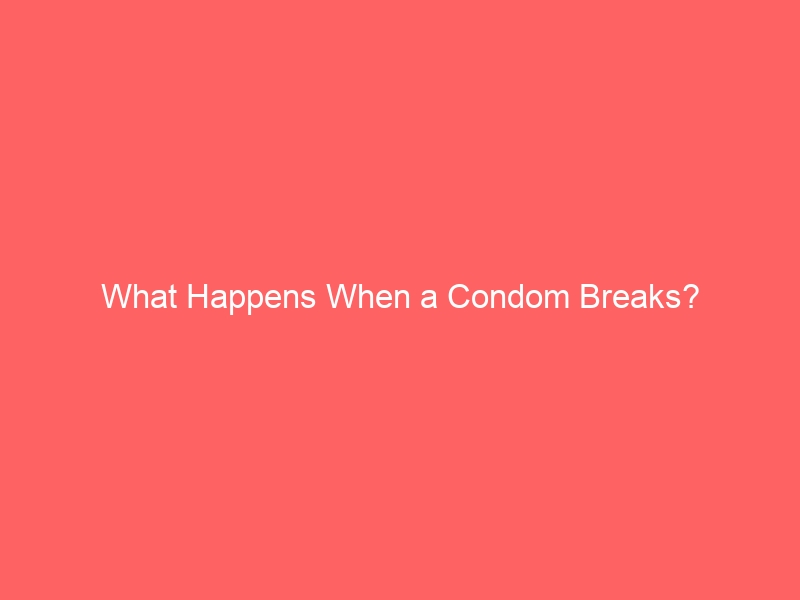We’ve all heard about the importance of using condoms for protection, but what happens when a condom breaks? It’s a situation none of us want to face, yet it can occur when we least expect it. When that happens, we might wonder just how easily can sperm escape condom and what risks we could be facing. In this article, we’ll explore the immediate actions we should take, the options for emergency contraception, and the steps to ensure our sexual health remains a priority. Together, we’ll navigate this tricky situation and learn how to prevent future incidents.
Key Takeaways
Assess the situation immediately after a condom break and communicate openly with your partner about feelings and concerns.
Consider emergency contraception options, such as the morning-after pill or copper IUD, and consult a healthcare professional for guidance.
Prioritize STI testing after a condom break, discussing optimal timing and common STIs with a healthcare provider.
Take preventive measures to avoid future condom breakage, including proper usage, storage, and handling.
Understanding the Risks of a Broken Condom
Understanding the risks of a broken condom can help us make informed decisions about our sexual health. We know that a broken condom can lead to unintended pregnancies. It can also expose us to sexually transmitted infections (STIs) if one partner is infected. Many of us might not realize that even a small tear can have significant consequences. We often underestimate the importance of checking the condom after use. It’s crucial for us to communicate openly with our partners about these risks. We should also be aware that certain factors, like improper storage, can increase the likelihood of breakage. By understanding these risks, we can take proactive steps to protect ourselves. Now that we’re aware of the risks, let’s discuss the immediate actions to take after a break.
Immediate Actions to Take After a Break
After a condom breaks, it’s crucial that we assess the situation and consider emergency contraception options. We should immediately ensure that we’re both safe and comfortable. We need to check for any signs of injury or discomfort that may require medical attention. It’s important to communicate openly about our feelings and concerns. We ought to gather any necessary information regarding our menstrual cycles and potential fertility. We can think about the timing of the incident, as it plays a significant role in our choices. If we’re both in agreement, we might want to explore options for emergency contraception. We can also consider consulting a healthcare professional for guidance. Now, let’s delve into the various emergency contraception options available to us.
Emergency Contraception Options
Emergency contraception options can help us prevent unintended pregnancy if a condom breaks. We’ve got a few choices to consider. The most common option is the morning-after pill, which we can take within 72 to 120 hours after unprotected intercourse. If we’re within that timeframe, it’s best to act quickly. Another option is the copper IUD, which can be inserted by a healthcare provider up to five days after the incident. We should discuss these options with a healthcare professional to find what suits us best. It’s important to remember that emergency contraception isn’t meant for regular use. We’ve got to understand how these methods work and their effectiveness. By knowing our options, we can make informed decisions about our reproductive health.
Testing for Sexually Transmitted Infections
Testing for sexually transmitted infections is something we should prioritize if a condom breaks. We’ve gotta understand the risks involved, and getting tested can give us peace of mind. It’s important to talk to our healthcare provider about when to get tested. We should consider testing for common STIs like chlamydia, gonorrhea, and HIV. Getting tested isn’t just for us; it’s for our partners too. We might need to wait a few weeks for some infections to show up on tests. Regular testing is a good habit, especially if we’re sexually active. It helps us stay informed and take care of our health. By prioritizing testing, we’re making responsible choices for ourselves and others.
Communicating with Your Partner
Talking openly with our partner about a broken condom is crucial for ensuring both of us feel safe and informed. We should share our feelings and concerns without judgment. It’s important to address any worries about potential pregnancy or STIs. We can discuss the steps we’ll take next, whether it’s testing or considering emergency contraception. Being honest about our emotions helps strengthen our connection. We might also want to talk about how we can prevent this from happening again in the future. Listening to each other’s perspectives is key to maintaining trust. We can create an environment where both of us feel comfortable expressing our thoughts. Ultimately, open communication helps us navigate this situation together.
Preventing Future Incidents
We can take steps to ensure we’re using condoms properly and regularly check their expiration dates to prevent future incidents. We’re also making sure to store them in a cool, dry place away from direct sunlight. It’s important for us to handle them carefully, avoiding sharp objects that could cause tears. We should be using water-based or silicone-based lubricants, as oil-based ones can weaken the condom.
Before we start, we can double-check that the condom is not damaged and that it’s the right size for us. We’re also committing to using a new condom for each act of intercourse, even if it’s during the same session. If we’re trying new brands or types, we can experiment together to find what feels best. Regularly discussing our sexual health with each other will help us stay informed. Ultimately, we’re both responsible for ensuring our safety and comfort.
If you’re concerned about what happens when a condom breaks, it’s essential to also understand the safety of the brands you’re using. For more valuable insights on this topic, I highly recommend visiting Understanding the Safety of Condom Brands. This resource can help you make informed choices about contraception and enhance your sexual health knowledge.
